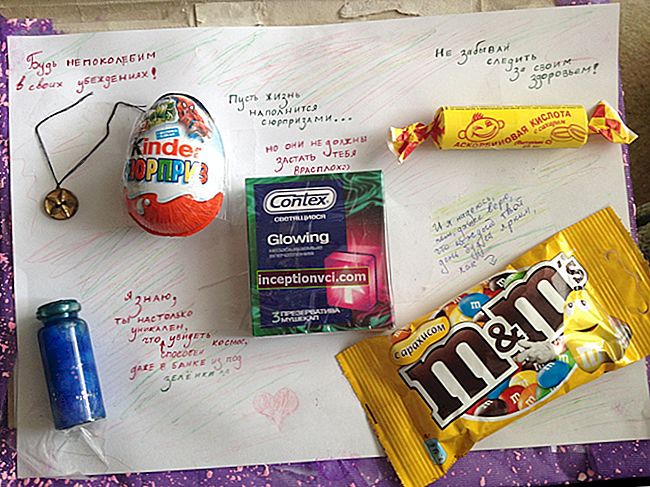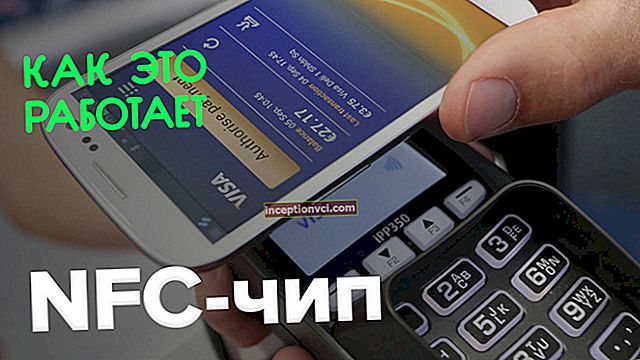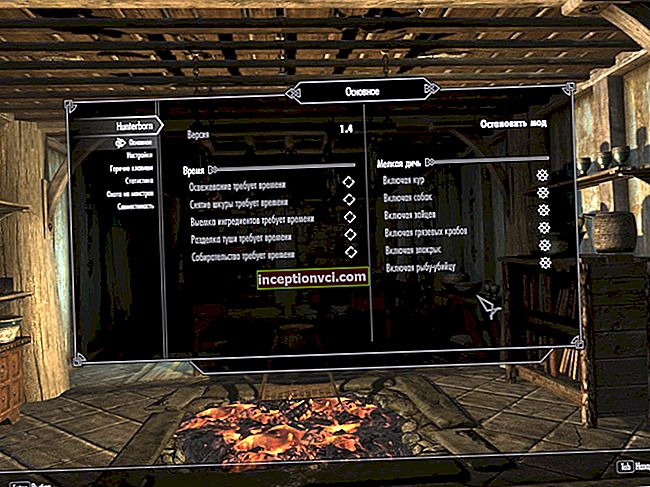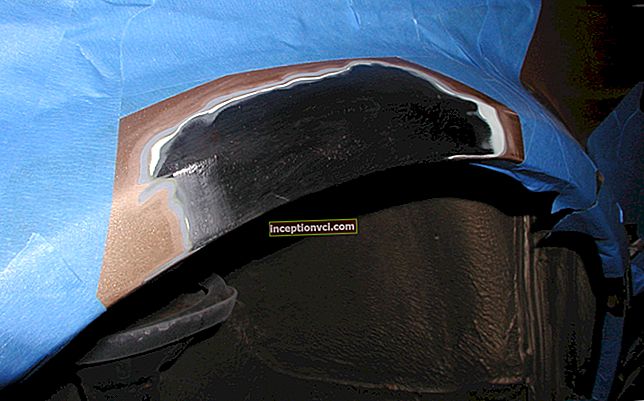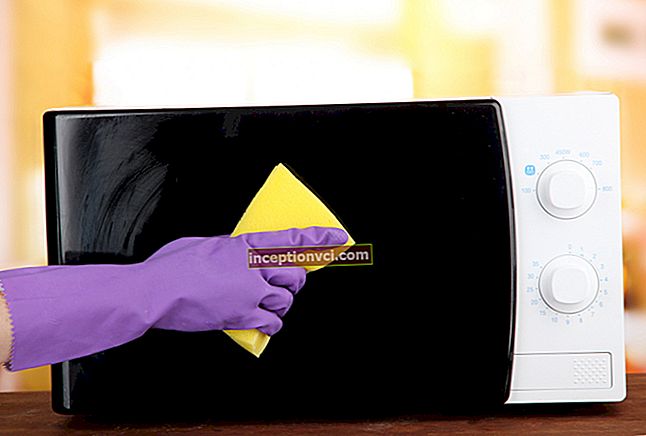The first model with Windows Phone 7 appeared on the free market. What is she like? 1GHz processor, multi-touch screen, made using Super Amoled technology, with a resolution of 480x800 pixels, with a diagonal of 4 inches, a 5 megapixel camera with the ability to record video in HD format. Doesn't it look like anything? Throw in the plastic case and you get the Samsung I9000 Galaxy S. But, by analogy with the first phones on Bada, the back cover is metal here. It is unknown on whose whim these phones are so similar, but they will definitely have to compete. And now for the fun part: this configuration is the minimum for Windows Phone 7.



Back to the I8700 Omnia 7. Excellent package bundle, build quality and materials, new OS onboard - everything is done for a strong market entry of the device.
Specifications
Quad-band GSM and tri-band 3G support
7.2 Mbps HSDPA and HSUPA support at 5.76 Mbps
4 Inch Super Amoled Capacitive Multi-Touch Screen, 480x800 Pixel, Glass Coating, Damage Resistant
Windows Phone 7 1GHz
1GHz Snapdragon QSD8250 CPU
5MP camera with autofocus, face detection, LED flash
720p / 25fps HD video recording
Bluetooth v2.1, Wi-Fi 802.11 b
GPS (A-GPS); digital compass
Internal memory 8 / 16GB
Accelerometer, light and proximity sensor
Standard 3.5mm audio jack
microUSB (charging)
FM radio with RDS
Li-Ion 1500 mAh battery
Microsoft Office Suite Mobile
Zune wireless sync integration
SkyDrive, Windows Live, Xbox Live
Hardware shortcomings include the lack of stereo speakers and camera protection.
Read a detailed review of Windows Phone 7 on the website in the near future, but for now, we will only note the following axis limitations:
No file manager
No Bluetooth file transfer
No USB connection mode as a flash card
Severely limited availability of third-party applications
No Flash in the browser
Heavy reliance on Zune file management and sync software
No video calls
No custom ringtones
There is not even a preset player equalizer settings
No multitasking
No copy / paste function
No support for DivX / XviD video (automatic conversion provided by Zune software)
No memory card support

It's no secret that Microsoft wants to sell its Windows Phone 7 achievements dearly. The easiest path to success is software development, which is the company's core business, leaving hardware concerns in the hands of other firms. For these firms, by the way, the task is not trivial. Firstly, it is necessary to have a sufficiently productive platform, secondly, the device must be liked by Microsoft, and, thirdly, the smartphone must have its own charisma. Samsung has it all.
If you've been following Microsoft's developments and are considering buying a phone based on the new OS, you will have to take a serious look at the Omnia 7. Samsung is only marginally responsible for the device's shortcomings. A much larger part lies on the shoulders of the developer - Microsoft. Serious controversy has already erupted on the forums. The specificity of the OS suggests comparing it with Apple's iOS: the same limitations in multitasking, copy-paste functions, no data transfer mode when connecting USB, no memory cards. Microsoft went the same way with PC sync - you'll be limited to the latest software
As many of our readers have already commented under our Windows Phone 7 OS analyzes, the new OS is quite similar to Apple's iOS in its strange limitations - stuff like lack of USB mass storage mode or no copy / paste, or even lack of memory card support - that's all rather inexplicable to the average user. Microsoft Zune for accessing your phone - photos, music, applications - everything goes through the Zune. However, Windows Phone 7 is designed to be a premium OS, and Microsoft is apparently convincing major manufacturers to accept the stringent hardware requirements. And while the existing restrictions seem silly, they are actually part of something larger.
Let's move on to the phone itself.
Measuring 122 x 64.3 x 11 mm, the Samsung I8700 Omnia 7 is a really big phone, but not a monster. About the size of the Galaxy S and Omnia 7, we can say that these are more powerful and solid smartphones among their kind. The case is the thinnest possible shell with a minimalist understated design. The phone weighs 138g - the same category as the iPhone. Perhaps a significant portion of the weight comes from the metal front cover. The gadget feels pretty secure and easy to use.


The design of the extremely successful Samsung S8500 Wave is clearly visible in the exterior of the I8700 Omnia 7. At first glance, this is the most independent design phone from Samsung, similar to HTC products. But this is not the case.




If you take a closer look, you will see that all of Samsung's signature features have been retained. The first Windows Phone 7 phone deserved to be distinguished from the crowd of the likes of the Galaxy S and S8500 Wave. The I8700 Omnia 7 seems like a serious stylish and elegant thing.

There are three control keys under the display. The central one, by analogy with the iPhone, is the hardware room with the Windows logo. On either side of it are two touch-sensitive search and return keys.

Above the display is a speaker, proximity and light sensors. Samsung Omnia 7 does not have a second camera for video calling. In fact, video telephony will not be available on any Windows Phone 7 smartphone for some time.



The volume key is located on the left side. The neck strap eyelet is also on the left in the upper left corner. On the right are the camera and screen lock keys. I would like to highlight the hardware camera key. It is somewhat raised above the body and is well palpable. The phone responds quickly to its pressing, the camera turns on almost immediately, even if the screen is locked. A proximity sensor saves from accidental activation in a pocket or bag.

Above there is a microUSB port under a plastic flap and a standard 3.5 mm audio jack. Below is a microphone. On the back you will find an unprotected 5MP camera, LED flash and loudspeaker.
The back cover is almost identical to Samsung S8500 - metal, pleasant to look at and touch. It opens by pressing a small key from the bottom. Under it is a 1500 mAh Li-Ion battery. For its size, this is a pretty powerful battery. There is a SIM slot under the battery. As you already know, Windows Phone 7 does not support memory cards. Therefore, they are not in Omnia 7 either.


If you love the Samsung Wave, you will love the Omnia 7. It's expressive, well-crafted, slim. It is not like other Samsung devices, but a completely new product of a different level and with a new OS must be different. There were no complaints about the convenience of control or handling of the phone.

Omnia 7, like the Galaxy S, is equipped with a four-inch Super AMOLED touchscreen with multitouch support and a resolution of 480x800 pixels. Its presence was not surprising. At the moment, this is the best display among devices of its kind. The display is incredible - in terms of contrast and brightness, it leaves the competition far behind. The black here is really charcoal black. The visibility of text and images is excellent even on a sunny day. Windows Phone 7 uses white fonts on a black background by default. Thanks to Super AMOLED, the picture seems unreal, as if printed on high-quality black paper.



The first thing you notice about Omnia 7 is that the Today screen is gone - which is good because the new home screen is one of the most flexible home screens out there. The context menu is quickly customizable both by topic and by order. The new OS itself is very aesthetically pleasing, and on the screen used it is absolutely gorgeous. If you do not like the combination of colors, you can change their combinations in the menu. Despite the lack of shadows and 3-D volume, the interface is still really beautiful, largely due to the animation and pleasant rendering.


Windows Phone 7 consists of two main parts - the home screen and the menu itself.The first is a set of mosaics that fully correspond to the concept of a widget, but, in contrast, are more versatile and with clear labels indicating what each of them does. They also show some quick information like number of messages, date. In principle, they can also be called labels.


The main menu is a traditional list where all installed applications are concentrated. Pressing and holding displays the context menu and allows you to attach elements to the mosaic, delete them, view information about the application.
There are no folders in the main menu, so if there are a lot of installed applications, then finding those rarely used can be a problem.
The interface is easy to use. Lists slide up and down, or left and right, there is a context menu. To call it, use a shortcut in the form of an ellipsis at the bottom right. Anyone who has worked with Android or iPhone will find it easier than ever to figure it out.
What Windows Phone 7 has lost is multitasking. The work is organized in the same way as in iOS: the button with the Microsoft logo sends to the home screen, and pressing the return key - to the last used application, which will continue its work from the place where you stopped working with it.


There is no “recently used” list type to make returning to the application you need easier. Thus, you may have to search for this in the main menu or keep clicking on the back button until you see what you need. Thus, a hint of multitasking remains, but there is no need to talk about true convenience, as on real multitasking operating systems.



The phone book is no longer on "contacts" or "contact details". Instead, it is organized by analogy with social networks and is in conjunction with these very networks. The first "People" screen shows a list of all contacts (phone contacts, social network friends, pen pals - everyone), with a search shortcut. Contacts are sorted alphabetically, indexed with blue squares with a letter. You can touch any of those field letters and the screen shows you a whole alphabet highlighting the letters actually in use. You can touch a letter and go to that part of the list.
Contacts can be sorted by name or date, they can be added to favorites or pinned to the home screen.
Viewing a contact's profile shows a photo of the contact. Below there are options - to type, send a message, write on the wall, and so on. Below each action, in a smaller font and in gray or blue letters, information hiding in this very item is displayed, for example, a phone number, email, URL, etc.
Programmable keys allow you to pin a contact, connect two (or more) contacts, view contact updates.
When editing a contact, you can add phone numbers, different types of email addresses (home, work, etc.), ringtone, note, or many different fields (such as birthday, website, office location, and so on).




The signal reception of the Samsung Omnia 7 is fine. There was no interruption of the call, and the sound remained loud and clear even in places with poor coverage.
The phone app shows call history with shortcuts to voicemail, dialing and phonebook. Dialing a number is as easy as it gets - just a keyboard with dial keys and save. There is no smart dialing - we drive in the whole number. The People hub is really good at finding contacts, but it would be better if Microsoft merged them. With an incoming call, the caller's photo is displayed on the full screen.
Messages in Phone 7 are sorted as dialogs. When viewing, all messages will be sorted by the date they were sent and received, and an empty reply window will remain below. To type a new message, just enter the first few letters of the contact - the search system will finish entering for you. You can also add a whole list of recipients. When you attach an image, sms will automatically turn into mmc.Email is just as well organized. The use of several mailboxes at the same time is supported. They can also be attached to the mosaic on the desktop.



All images in Windows Phone 7 are displayed in the Pictures gallery. New files appear first at startup. Directly from the menu, you can upload files to Facebook and similar networks. Viewing photos using such a gorgeous screen turns into a sheer pleasure, and compliance with the serious requirements of Microsoft regarding technical filling eliminates lags even in 5MP photos.
The audio and video players are in the hub that carries the Zune logo. When launched, it shows the history, namely the last two played files. If you want, go to the standard menu and launch an audio player or video player, listen / watch podcasts (and audio and video podcasts are supported), launch FM radio, or use the Merket app.
Music and Hub Videos
Audio and video players are simple and have direct interfaces. There are no difficulties in using them. Not without silly flaws - there is no equalizer (even preset settings), no rewind bar - you have to hold the key until the desired moment. Interestingly, you can attach a radio frequency, a video, and even a song to the home screen.



Players can of course run in the background. When you press the sound key, the name of the currently playing melody to the player control key is displayed.
The video player doesn't recognize AVI files - in other words, don't expect DivX or XviD support. However, the Zune Software on your computer will automatically convert such files to MP4 - so you can watch those formats on the Omnia 7.



The Samsung I8700 Omnia 7 offers fairly high sound quality. High and middle frequencies are output clearly and cleanly, but low frequencies do not differ in depth. This is especially noticeable when connected to an external device. In headphones, this specificity is not so noticeable.
The smartphone uses a 5MP camera with auto focus and a maximum photo resolution of 2592x1944 pixels, LED flash. Camera control is pretty simple - there is a viewfinder, some controls - switching to video shooting, zooming and a switch for advanced settings. I really liked that, not including the gallery, you can view the captured photo and video. Swipe to the right or left, and the material is available


Interestingly, the camera key works even when the screen is locked. One press and the camera is ready to go. In order to avoid accidental activation, the proximity sensor blocks this function if the phone is in a bag or pocket.
The photo quality of the Samsung Omnia 7 is impressive. In principle, everyone has known for a long time that the number of pixels has nothing to do with quality, but this idea has been invested in us for too long by manufacturers. There is some noise, but the color noise reduction algorithms find a good balance between preserving detail and suppressing noise. Macro shooting also attracts only positive reviews.
Examples of photos:





The camcorder interface is identical to the digital time lapse camcorder one and also has many functions. You can calibrate contrast, saturation and sharpness, change white balance or exposure compensation, and add effects as well. It is also possible to use LED as video light as well. Video recording - in two resolutions - VGA or 720.
720p video was less impressive in practice than on paper. The speed, the amount of detail, and artifacts are also criticized. The frame rate is in the limit of 23 frames per second, which leads to a lack of smoothness of the picture.
Samsung has everything in order with the means of communication - GSM / GPRS / EDGE, 3G with HSDPA and HSUPA, Wi-Fi, but Bluetooth v2.1 is puzzling - the top smartphones are already using v3.0.
Transferring files between computer and mobile phone on Windows Phone 7 can become a problem.Microsoft's decision to cut back on mass storage functionality (and the lack of a microSD card slot on the Omnia 7) means the user needs the Zune app on the computer to transfer files. Synchronization over Wi-Fi is possible, and this is the only option to transfer files. Alternatively, you can use Sky Drive to transfer files, a free Microsoft service that provides 25GB of storage. The OS has an option when new photos are loaded into the storage automatically. Windows Phone 7 is also very picky about what files are attached to email or website uploads - and videos weren't among them.
Internet Explore, as mentioned, does not support Flash. In addition, there are no complaints about its work - everything is smooth, convenient, looks good, there is support for several tabs. The screen has a high resolution and a good diagonal, which also has a positive effect on usability. It's too early to talk about the browser itself. the highest system performance would make any browser work well. However, we are waiting for alternative browsers like Opera for comparison. Any site can be brought to the desktop.



The organizer is a standard set of utilities - calculator, alarm clock with multiple signal, calendar, organizer, etc. Everything is well drawn, well organized and comfortable. There is synchronization with online services, including Google Calendar and Outlook.



The Office Hub deserves a special mention - an important part of Windows Phone 7 packages. The interface is identical to other hubs and this is the best mobile office suite we've seen.
The Office Hub is divided into three sections - OneNote, Documents, and SharePoint.
OneNote is a program for creating quick notes and organizing personal information, adding photos and voice memos.
Collaboration for both Word and Excel files is provided with SharePoint. It allows you to sync, share documents using a leveraged SharePoint server.
Excel and Word are the main building blocks of the Office suite. Nevertheless, we will not dwell on them. A description of all the functions will make an article, in terms of volume, not less than this one. For people familiar with this package, everything is already clear. Let's just note once again the absence of the copy / paste function.






The Daily App, a summary hub, is a compilation of several apps that provides one-click access to multi-city weather, news for multiple countries and categories (including international), and stock prices.



Windows Phone 7 Market is launched using a dedicated application. Sorting apps - by category, popularity and date added. The Games section is divided into Xbox Live, Main, New and categories sorting games by genre.
The music section is actually the Zune Marketplace. Its structure is similar to the application section.
The genres themselves are divided into sections as well - new releases and top artists / albums / songs / playlists. For each song, a 30 second preview is available.



The biggest problem with the new Marketplace is the lack of applications. This is the most common problem when launching the app store under a new OS. The number of apps and games will grow, but the question is how quickly. Of course, no one, except for software developers, stimulated by monetary rewards, is able to resolve this issue. Therefore, Microsoft released software for software development with free circulation, and it was downloaded more than 300,000 times already at the time of the official presentation of Windows Phone 7.



One way or another, each app will be listed with a short description, rating and user reviews, and a few screenshots. If an app might use something that could potentially violate your privacy (such as location information), the Marketplace should report it.



Xbox Live is at the heart of the Games Hub. Here you can play with friends, chat using your profile. Not all games will be available - only those in the store.So far, there are few games, but Microsoft is promising a large number of them in the near future. Considering the Galaxy S-like configuration is minimal, the gaming quality is encouraging.
Conclusion
Windows Phone 7 left mixed feelings to say the least. WP7 devices have been designed around the OS, not the other way around. The Samsung I8700 Omnia 7 is the first smartphone with WP7-grade hardware and is impressive. Microsoft has put in some tough restrictions on qualifying a device as WP7-eligible. Here and the top processing power of the line, and large screens, and powerful image processing. What league will Omnia 7 play in? The only competitor at the moment is Samsung Galaxy S - the same 4 "SuperAMOLED screen, the same 1GHz processor, similar proportions and weight. You can also add an iPhone. While the former is based on a very powerful platform and stands out for its characteristics, the latter is surrounded by a premium segment. Omnia 7, in our opinion, is somewhere in between: power and charisma are inherent in it in equal measure. As already noted, this smartphone meets the minimum requirements of the new OS, so it is logical to assume that Windows is aiming at the emerging segment of the so-called "superphones". There is a demand for such models as HTC HD, HD2, Galaxy S and it is growing. If Windows succeeds, then it will not compete with either the squeezed iOS, the massive Androi

